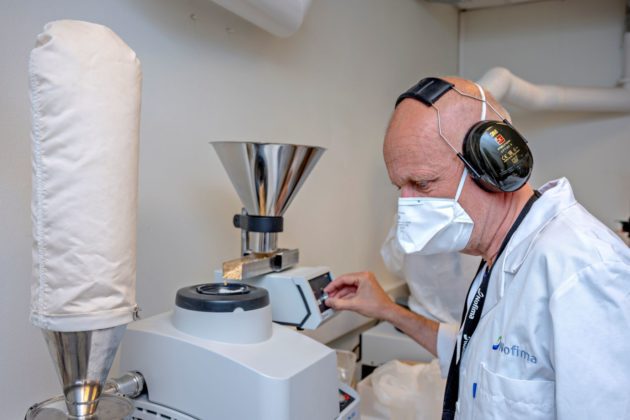Norwegian beans and cereals in burgers

Sales of vegetarian products are increasing, but few are based on Norwegian cereals and pulses. Nofima scientists are working to increase the use of Norwegian protein-rich raw materials.
“Broad beans or faba beans are a promising foodstuff. We have developed a step-by-step process model for production of protein-rich ingredients from broad beans. This is a technology that the industry can benefit from”, says Senior Scientist Svein Halvor Knutsen.
Why broad beans?
Many of today’s plant-based meat substitutes are produced from soybeans. Broad beans can be a good soybean substitute:
- Broad beans can be cultivated in Norway
- Broad beans are rich in protein
- Once the hull is removed, the kernel has a relatively neutral taste. Therefore, it is easier to add other flavours without the taste being negatively affected.
Good sources of protein are required
Plant-based meat substitutes used in meals should have a protein content of approximately 20 percent. Most of today’s vegetarian products have a much lower protein content. It is important to emphasise protein content when assessing different processing stages and technologies.
“Broad beans have a protein content of ca 30 percent. We have developed a fractionation technique that doubles the protein content of the protein fraction. The protein fraction is only one of the ingredients in the finished meat substitutes, so the protein content should be as high as possible”, says Senior Scientist Stefan Sahlström.
Optimal processing models
An important part of the scientists’ work is to develop optimal step-by-step process models to produce ingredients.
The following process steps are beneficial when processing broad beans:
- Stone milling technology is best suited for separating the hulls from the kernels. The hulls are removed because they contain a lot of tannins that produce a bitter taste
- A so-called zig-zag air classifier is used to separate the hulls from the kernels
- Hammer milling technology mill the kernels into smaller particles, then a pin mill is used to produce a fine powder made up of protein and starch particles
- A final process involving an air classifier produces a protein fraction and a starch fraction.
- Extrusion technology enables one to produce healthy snacks or ingredients that can be used as meat substitutes. The ingredients provide structure to the meat substitutes. There are many possibilities, and the recipes are adapted to the products one wants to develop.
Different process steps for different raw materials
Nofima scientists have worked hard to find out which technologies are best suited for the various process steps. The relevant steps depend on the type of raw materials that are included in the products.
Unlike legumes, oats contain quite a lot of fat. It is beneficial that this fat is separated out early in the process. This means that there is an additional process step; separating the fat. The scientists have found that this is best done using supercritical CO2 extraction technology – a sustainable technology that replaces the use of organic solvents such as hexane.
Supplying input to the industry
Several experiments have been carried out, including a good deal of trial and error. The technical processing equipment needed in the various process steps is available in Nofima’s pilot plants and is part of the infrastructure project called Food Pilot Plant.
“We want to work in projects together with the industry where the process models we have developed and the equipment we have installed are used”, Knutsen points out.
Nothing left to waste
Developing sustainable food involves utilising all the raw materials in the best possible way. To date, the scientists have developed ingredients from protein fractions. They are now trying to find suitable applications for starch.
“We envisage that side streams such as starch can be used as binding agents in meat substitutes and replace the use of imported tapioca- and corn starch”, Sahlström concludes.
Publications
Facts about the research
The research is funded by The Research Council of Norway and Research Funding for Agriculture and the Food Industry
